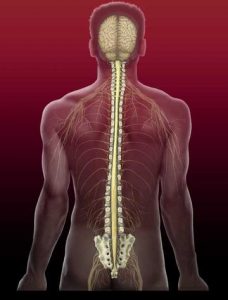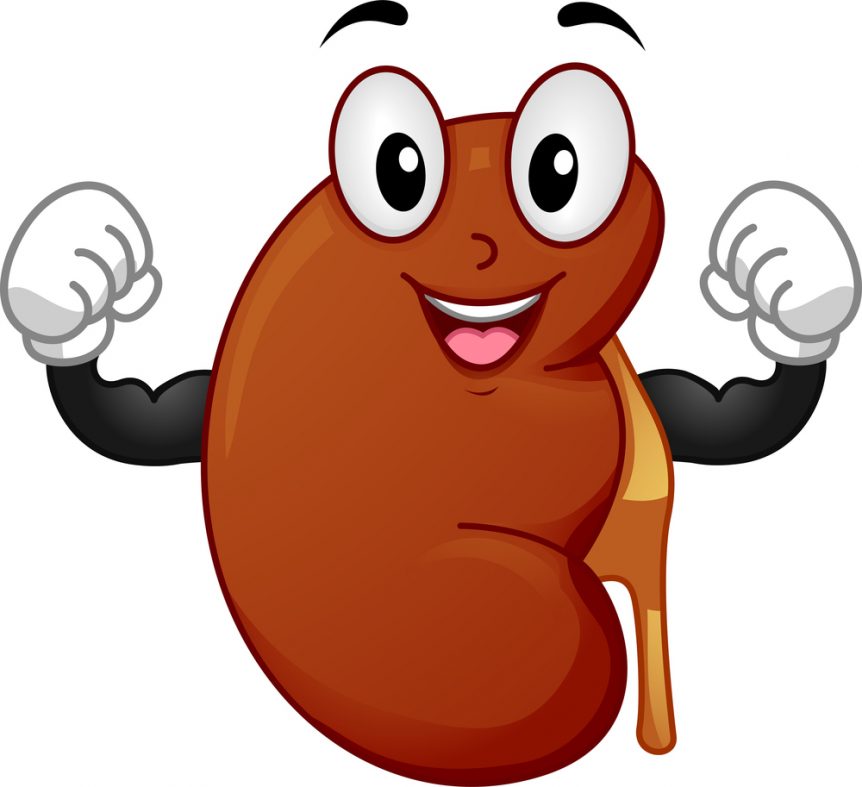Trauma Training Tip
The Kidney and Adrenal Gland are contained in a fascial “sac” that integrates them into a single functional unit. One important job they play together is to signal our response to danger or life-threat. Life-threatening experiences in infancy, or intense or ongoing threats in adulthood may cause this signaling center to get stuck “on”. Enduring high arousal consumes Jing and causes high morbidity and mortality rates in trauma survivors.
Patients who did not experience feeling safe while immobilized as infants or young children, with e.g. hugs, playful wrestling and cuddling, may be very challenged by not being able to see your treatment room door, having you standing above (“towering over”) them, not being able to see you when you are behind them, removing their clothes, or any experience of intrusion into their boundary. Creating an experience of safety in our treatment rooms is a critical foundation for working with trauma survivors. Building capacity in the Kidney/Adrenal system will help survivors re-boot this signaling center for threat.
Some suggestions:
- Invite your patient to choose the chair they would like to use, end of the table they would like their head, and the distance between your chairs.
- Cultivate your awareness of brace and collapse in your patient’s tissues as you prepare to place a needle. If they are braced, you risk more pain and a loss of trust. If they are collapsed, your needle will be less effective because their Qi is less available.
- Press the needle’s guide tube against the point and ask them to tell you when the point is ready for the insertion. Let them be in charge of when you insert.
- Ask your patient to notice what happens as you step towards their back. If they notice feeling anxious, but say, “it’s ok, I can take it” – you need to stop before you violate their body’s wisdom of a safe boundary.
Alaine’s Two Cents
Our nation needs its healers more than ever. The dynamics of fear that are gripping our national dialogue (and our hindbrains) can take our more relational and thoughtful frontal cortex hostage. Healers can play an important role in establishing a culture of safety to support building relationships across differences, and taking effective action to protect vulnerable populations.
You may be interested in volunteering your time or donating funds to Acupuncturists Without Borders, who is working with other acupuncture and medical teams to provide treatment at the Standing Rock Reservation in North Dakota. The need is critical as winter descends, to equip and coordinate a winterized acupuncture clinic for the Standing Rock Sioux Tribe and its allies.
There is both ancestral trauma in the Sioux Nation, and immediate trauma as protesters are attacked with water guns, sound grenades, and mace, while facing extreme cold and hypothermia. Many have been injured in the process of arrests and incarceration. Here’s a link for your donation: http://www.acuwithoutborders.org/donate/
Opportunity Knocks
Position Available – Provide 12 Points for Restoration & Balancetm Auricular Acupuncture Groups at the DC Veterans Administration Integrative Health & Wellness Service.
Here’s the job description: http://integrativehealingworks.net/job-description-wellness-care-acupuncturist/
Here’s a link to the 12 Points for Restoration & Balance™ method: http://www.acuwithoutborders.org/12-points/
Check This Out
Here’s a fascinating thing: Dr. Stephen Porges has enhanced the study of the autonomic nervous system (ANS). We used to think there were 2 branches of the ANS — sympathetic and the parasympathetic. Dr. Porges describes 3 branches – and his theory illuminates the Kidney/Heart axis of AOM! From our study of Chinese numerology, we know that the movement from 2 to 3 is all about the movement from Yin and Yang to the creation of Qi and movement. Welcome to the R&B After Trauma series – a meeting place where the science of Western Medicine and the wisdom of AOM can inform and illuminate each other. Our patients are the winners.
Explore the pivotal dynamics of Water/Fire; Kidney/Heart; Yin/Yang in traumatic stress in this article by John Chitty.
 Clinical Curiosity
Clinical Curiosity
Where is your clinical curiosity carrying you? Send me a question or two and I will explore them with readers in this corner next month. Here’s one that recently came to me:
Q. My patient has had several concussions. Do you have any advice?
A. The overlap between traumatic stress responses and brain injuries is very high. We experience injuries to our heads with significantly more arousal and fear than an injury to our feet! Head injuries activate survival instincts and can cause tissue swelling or tissue damage.
Common symptoms include headaches, vertigo, and visual and cognitive disturbance. Childhood playground accidents, trips, falls or car accidents from long ago can give rise to mysterious and insidious symptoms.
Thankfully we don’t have to decide whether these symptoms arise from a traumatic stress response or injury to tissue. Our work is to restore a sense of regulation and safety in the autonomic nervous system so their inner physician can be more efficient and effective with healing any tissue damage. We treat their tissues and their stress response concurrently.
First, treat their constitution to restore overall regulation to their trauma response. It may take time before your patient is able to have you close to their head, so you may need to work distally. Master and Couple points for the Governor Vessel or the Yin and Yang Heel Vessels, if appropriate, may be helpful. Eventually, you will want to find the vector of the injury and treat the location of the “coup” or the site of impact, and the “countre-coup” or the opposite side of the impact – where the brain may have “bounced” against the inside of the skull.
The upcoming class, Signaling Threat, will include touch skills attending to the brain stem, and the local structures that give rise to the fight and flight response. Working with the brain stem can be very helpful for restoring regulation to high arousal from head injuries.

